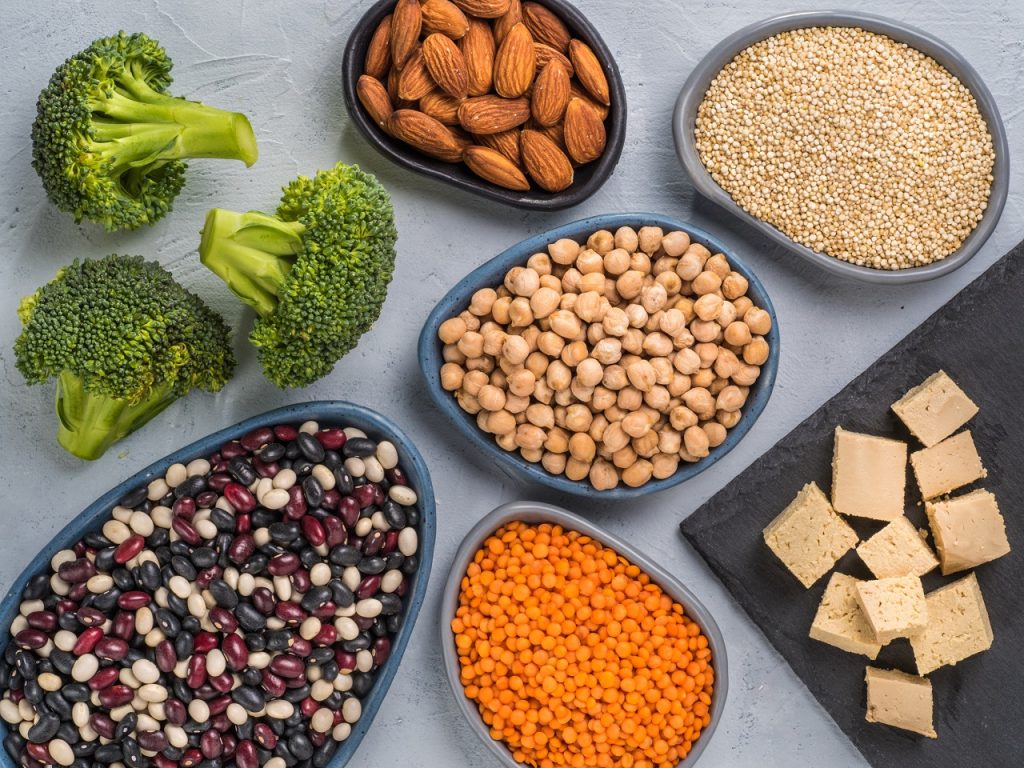
Plant-based eating means that you eat a lot of fruits, vegetables, nuts, seeds, and other plant-based foods. This diet can help lower your risk of developing type 2 diabetes and stroke. It also helps the heart stay healthy. This article will discuss the benefits of a diet that is plant-based for diabetics. You will love this diet for its health benefits to your heart.
Plant-based diets are eating patterns that emphasize legumes, whole grains, vegetables, fruits, nuts, and seeds
These diets are generally healthier and more nutritious than the traditional Western diets, which emphasize animal-based ingredients. There are however some key differences that these diets have from conventional diabetic diets. They may look very similar, but they have major differences. People often confuse the absence of animal-sourced ingredients with greater health. These diets may not be free of ultra-processed food, saturated fats and refined carbohydrates. Moreover, a diet rich in these foods can actually increase the risk of diabetes.
A plant-based diet can be beneficial for diabetics. This type of diet is rich in vitamin C, which increases iron absorption. A variety of proteins can be used to supply all the necessary amino acids for good health. Also, it has omega-3 fats that can lower inflammation, heart disease, and other chronic conditions.

They lower risk of type 2 diabetes
A recent study found that a plant-based diet could lower your risk of developing type II diabetes. This result is consistent across all age groups and with body mass index (BMI). BMI (body mass index) is a measure that measures your body weight divided for height. It is used to screen people for obesity. A BMI between 25.9 to 29.9 indicates that you are overweight and a BMI over 30 signifies that you are obese. Obesity can lead to type 2 diabetes. It is important to eat a healthy diet in order to lower the risk of developing it.
Even though plant-based diets might not be right for everyone, there are many benefits. The current study involved more than 10,000 participants in prospective cohorts to assess whether plant-based diets reduced the risk for type 2 Diabetes. To assess the link between plant-based diets with type 2 diabetes, the researchers used metabolic profiles scores derived using food frequency questionnaires. It was also shown that consuming a plant-based diet has a lower chance of developing the disease than omnivorous and semi-vegetarian meals.
They lower the risk of stroke
Studies have shown that people with diabetes may be more likely to eat a plant-based diet. A plant-based diet has been proven to lower blood sugar, which is crucial in preventing strokes. A healthy diet should include plenty of fruits and vegetables and plant-based protein. It should also include nuts, seeds, and whole grains. The new study focused on these aspects and found that plant-based diets can reduce the risk of stroke.
These findings are especially compelling considering that stroke risk is already reduced by these diets. Research has also shown that a plant diet is beneficial for people with other cardiovascular diseases. These people should incorporate cardiovascular-friendly lifestyle changes, including increasing their exercise level. A plant-based diet may lower your risk of stroke by as high as 50%.

They are good for your heart health.
For people with diabetes, a plant-based diet can be a great choice. It is good for your heart. It is high in fruits and vegetables and has no processed or red meats. A study has shown that a plant-based diet can lower your risk of developing cardiovascular disease by 52%. It can reduce the risk of strokes, severe depression, and other serious health problems. For those at high risk of suffering a stroke, it is highly recommended.
A plant-based diabetes diet is healthier than one that is conventionally based. Studies have shown that plant-based diets can reduce the risk of cardiovascular disease by reducing blood cholesterol and triglycerides. However, the diets must be strictly followed. It is important that you adhere to a plant-based diet. This can be difficult.
FAQ
What's the difference between a virus & a bacterium?
A virus is an organism microscopic that can't reproduce outside its host cells. A bacterium, a single-celled organism, reproduces by splitting into two. Viruses can be as small as 20 nanometers, while bacteria can grow up to 1 micron.
Viruses can spread from contact with bodily fluids that are infected such as saliva, urine or semen. Bacteria can easily be spread from direct contact to contaminated objects and surfaces.
Viral infections can be transmitted through skin cuts, scrapes and bites. They can also get into the skin through the nose, mouth and eyes, ears as well as through the rectum, rectum and anus.
Bacteria may enter our bodies through cuts and scrapes on our skin, burns, insect bites, and other wounds. They may also come into our bodies through food, water, air, soil, dust, or animals.
Both bacteria and viruses cause illness. Viruses cannot multiply in their host cells. Viral infections can only cause diseases in living cells.
Bacteria can multiply within their hosts and cause illness. They can even invade other parts of the body. That's why we need antibiotics to kill them.
These are five tips to help you lead a healthy lifestyle.
Are there 5 ways to have a healthy lifestyle?
Healthy lifestyles include eating right, exercise regularly, getting enough rest, managing stress, having fun, and eating healthy. Eating well means avoiding processed foods, sugar, and unhealthy fats. Exercise can help you burn calories and strengthen your muscles. Sleeping enough can improve memory and concentration. Management of stress can help reduce anxiety levels and depression. Fun is the key to keeping us healthy and happy.
What are the ten best foods to eat in America?
The top 10 best foods are:
-
Avocados
-
Berries
-
Broccoli
-
Cauliflower
-
Eggs
-
Fish
-
Grains
-
Nuts
-
Oats
-
Salmon
Statistics
- According to the 2020 Dietary Guidelines for Americans, a balanced diet high in fruits and vegetables, lean protein, low-fat dairy and whole grains is needed for optimal energy. (mayoclinichealthsystem.org)
- WHO recommends reducing saturated fats to less than 10% of total energy intake; reducing trans-fats to less than 1% of total energy intake; and replacing both saturated fats and trans-fats to unsaturated fats. (who.int)
- According to the Physical Activity Guidelines for Americans, we should strive for at least 150 minutes of moderate intensity activity each week (54Trusted Source Smoking, harmful use of drugs, and alcohol abuse can all seriously negatively affect your health. (healthline.com)
- Extra virgin olive oil may benefit heart health, as people who consume it have a lower risk for dying from heart attacks and strokes according to some evidence (57Trusted Source (healthline.com)
External Links
How To
What does the "vitamin") mean?
Vitamins are organic compounds found naturally in food. Vitamins are essential for our bodies to absorb nutrients from the foods we eat. Vitamins cannot come from the body so food must provide them.
There are two types vitamins: water soluble or fat soluble. Water-soluble vitamins dissolve easily when they are dissolved in water. Vitamin C,B1(thiamine), B2 (2riboflavin), and B3 (3niacin), as well as vitamin C,B1, B2 (riboflavin), and B3 (niacin), vitamin B6 (pyridoxine), vitamin folic acid (biotin), pantothenic, and choline are examples. The liver and fatty tissue are the main storage places for fat-soluble vitamins. You can find vitamin D, E K, A and beta carotene as examples.
Vitamins can be classified according to biological activity. There are eight major types of vitamins.
-
A - essential for normal growth and maintenance of health.
-
C - important for proper nerve function and energy production.
-
D - Essential for healthy teeth and bones.
-
E is needed for good reproduction and vision.
-
K - Essential for healthy muscles and nerves.
-
P - Vital for strong bones and teeth.
-
Q - aids digestion and absorption of iron.
-
R - Red blood cells are made from red blood cells.
The recommended daily allowance (RDA) of vitamins varies depending on age, gender, and physical condition. The U.S. Food and Drug Administration has established the RDA values.
For adults over 19 years, the RDA is 400 mg per day for vitamin A. Pregnant women require 600 micrograms daily to support fetal development. Children ages 1-8 require 900 micrograms per day. Infants below one year of age need 700 micrograms daily. But, between 9 months to 12 months of age, the amount drops to 500micrograms per days.
Children ages 1-18years who are obese need 800 micrograms per day while those who are overweight need 1000 micrograms per day and children who are underweight need 1200 micrograms per day to meet their nutritional needs.
Children between 4-8 years of age who have been diagnosed by anemia must consume 2200 micrograms daily of vitamin C.
2000 micrograms per person is necessary for general health. Mothers who are pregnant, nursing, or have a high nutrient need will require 3000 micrograms a day.
1500 micrograms are required daily by adults over 70 because they lose approximately 10% of their muscle each decade.
Women who are pregnant, nursing or breastfeeding need more than the RDA. Pregnant women need 4000 micrograms per dayduring pregnancy and 2500 micrograms per day after delivery. Breastfeeding mothers need 5000 mg per day when breastmilk is being produced.